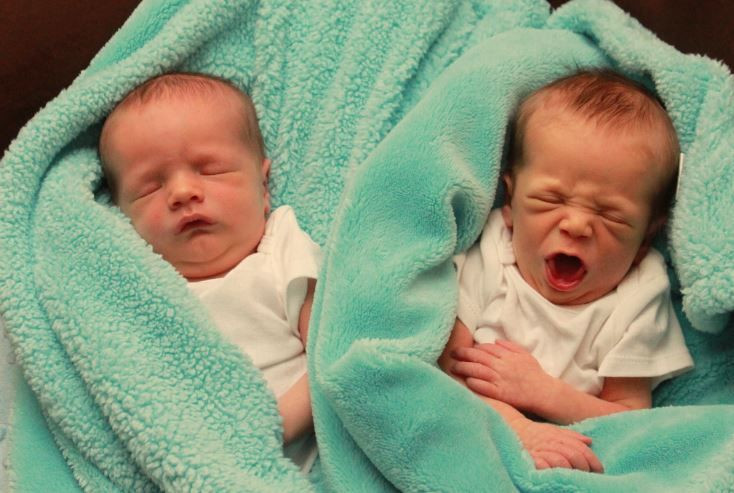Identical Twins May Begin Growing Unevenly During Early Stages Of Fetus Development

Identical twins, though fascinating to scientists and cherished by parents, are often at risk for congenital anomalies. One of the most common is something called severe discordant growth, where twins experience a 25 percent difference in fetal or birth weight. Given around 80 percent of identical monozygotic (MZ) twins share a placenta in the womb (called a monochorionic/diamniotic pregnancy), the risk of discordant growth is very real, occurring in 7 to 14 percent of these pregnancies. But how soon do these differences start to take shape?
According to a new study led by King's College London (KCL), uneven growth between MZ twins in the womb may begin in the earliest stages of embryo development. Presented in Stem Cell Reports, the research examines an embryo containing two inner cell masses (ICMs) that had been donated for research. ICMs are the internal cluster of cells at the embryonic pole of a blastocyst, which eventually develops into an embryo. With two ICMs, the embryo signaled a monochorionic/diamniotic pregnancy that would lead to MZ twins.
Researchers reported the two ICMs were not equal in size, and a high-resolution RNA sequence indicated the ICMs were also at different stages of development. The smaller ICM was still in the earliest stages of cell lineage commitment, while the larger ICM appeared to be growing more rapidly. While the differences in development would probably become negligible, the difference in size would likely continue throughout the entire pregnancy.
"Having two distinct ICMs within a single embryo of which one was bigger and more developmentally advanced than the other was an unexpected finding," said Laila Noli, first author and PhD student at KCL, in a press release. "Prevailing opinion would expect them to be absolutely identical at that stage, and that the cause of uneven growth of MZ twins would be due to their position in the womb or other unknown environmental circumstances at later stages of pregnancy."
Lead study author Dr. Dusko Ilic agreed that the findings challenged current opinions on MZ embryo development.
"Until now, the earliest report of uneven growth in MZ twins was at 12 weeks of pregnancy," he said. "We found that it can start virtually in the first few days after conception. The prevalence of such early stage uneven growth is not known and further case reports and studies are needed."
Ilic said that he and his team weren't sure if the two ICMs formed because of the uneven splitting of a single "parental" embryo, or if they formed independently. Regardless, the study definitely suggests molecular and cellular events play a role in uneven MZ twin growth.
Source: Noli L, et al. Discordant Growth of Monozygotic Twins Starts at the Blastocyst Stage: A Case Study. Stem Cell Reports. 2015.
Published by Medicaldaily.com



























